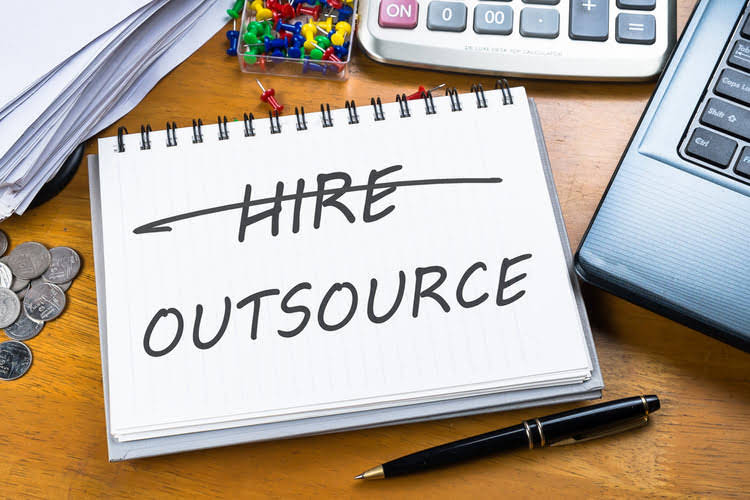
This can be particularly useful for businesses that experience long payment cycles or seasonal revenue fluctuations. By converting invoices into quick cash, businesses can cover operational costs, invest in growth, and ensure they meet financial obligations on time. Unlike traditional loans, accounts receivable financing doesn’t involve taking on new debt—it’s simply a way to unlock the money that’s already owed to you. The discount rate is the fee a factoring company charges to provide the factoring service. Since a formal factoring transaction involves the outright purchase of the invoice, the discount rate is typically stated as a percentage of the face value of the invoices. For instance, a factoring company may charge 5% for an invoice due in 45 days.
Why do companies Factor Receivables?
If a business enters into a recourse factoring agreement and a customer does not pay their invoice, the business must buy that invoice from the factoring company at the end of the payment term. Under a non-recourse agreement, the factoring company bears all of the risks of nonpayment. For borrowers who prefer an in-person factoring option, Riviera Finance works with more than 25 invoice factoring companies across the U.S. and Canada. Online factoring services are available to clients in all 50 states, but businesses near a brick-and-mortar location can visit a branch in person. As we exit the small business financial crisis caused by the corona virus, many lenders are either tightening their credit requirements or pulling out of lending altogether—at least in the short term.
Why Use Bankers Factoring as your AR Factoring Company
In recourse factoring, the factor reserves the right to return an invoice to the client should a customer fail to pay within the agreed upon terms. Just as a consumer may return a defective product for a refund, so a factor may return a faulty receivable for a refund in a recourse factoring agreement. Depending on the agreement, the factor may refund unpaid receivables from the client’s reserve, or from the next incoming sales batch. Generally, only factoring accounts receivable when the reserve is insufficient to cover the chargeback will the factor ask their client to pay the difference.
- If unpaid invoices are throwing a wrench in your incoming cash flows, invoice factoring can certainly help.
- Accounts receivable financing typically requires strong credit, which can be a stumbling block for some business owners, and it may come with a lower funding limit.
- Receivables factoring is most effective for established businesses with multiple customers or clients.
- If you don’t want your customers alerted when you sell their invoices, look for a company that doesn’t notify them.
- This approach is ideal for businesses looking for consistent cash flow support.
How Instant Small Business Loans Are Fueling American Entrepreneurs

Accounting for factoring transactions requires a thorough understanding of specific principles to ensure accurate financial reporting. When a business sells its receivables to a factor, it must determine whether to remove these assets from its balance sheet. This decision hinges on whether the business has transferred the risks and rewards of ownership. In recourse factoring, where the business retains some risk, the receivables may not be fully derecognized. Conversely, in non-recourse factoring, where the factor assumes all risk, derecognition is more straightforward.

These loans often offer lower interest rates and longer repayment terms compared to bookkeeping traditional bank loans. While the application process can be lengthy and paperwork-intensive, SBA loans are outstanding for businesses that meet the eligibility requirements and have time to plan their funding. Like most near-term and short-term financing options, invoice factoring typically carries higher rates and fees compared to traditional long-term business financing.
- Factoring is typically more expensive than financing since the factoring company takes responsibility for collecting on the invoice.
- If a business enters into a recourse factoring agreement and a customer does not pay their invoice, the business must buy that invoice from the factoring company at the end of the payment term.
- Small to mid-size businesses are continually faced with waiting 30 to 60 days or more to get paid on their invoices, which puts a strain on their cash flow.
- Aside from the advantage of getting cash upfront, accounts receivable factoring is also commonly employed as a strategy to transfer payment risk to another party (in this case, the factoring company).
- This approach provides transparency to stakeholders about the nature of the business’s financing activities and its exposure to credit risk.
Treasury Management Solutions
Invoice factoring companies connect businesses with the cash they need by purchasing their outstanding invoices and assuming responsibility for collections. Factoring companies are often more concerned with the creditworthiness of a business’ customers, so this source of financing is ideal for businesses with less established credit. Using accounts receivable factoring could be important for your business if you are in fact operating within an industry where customers are granted payment terms to pay for goods or services. In some manufacturing industries and the textile industry, factoring is one of the financing vehicles of choice.

How to qualify for factoring receivables
With traditional invoice factoring (also known as notification factoring), the business’s clients are made aware that their invoice has been sold to an accounts receivable factoring company. Non-notification factoring is confidential — clients continue making payments to the business just as before, but the factoring company is actually the one handling the transactions. Unlike a line of credit, accounts receivable factoring doesn’t require your business to take on debt, so it won’t impact your credit score directly.

- A bank line of credit will generally advance up to 75% of good accounts receivable (meaning under some aging limit–usually 60 or 90 days).
- Invoice factoring can be a quick and cost-effective way to finance your company.
- Within each major category, we also considered several characteristics, including available advance rates, financing amounts and applicable fees.
- The factoring fee is considered an interest expense, while the due-from factor amount is added to the reserve account.
- Typically, you will get a cash advance for a portion of the total amount within a few business days.
Collecting funds from your business’s customers can be time-consuming and labor-intensive. Factoring improves business efficiency by saving businesses the need to pursue their customers for invoice payments. Factors need proof that a business has outstanding invoices before signing a factoring agreement, so companies must wait https://www.bookstime.com/ until they have invoices that need factoring. Once the parties have agreed to a fixed term for their business relationship and signed the factoring agreement, the factor will handle all outstanding invoices for the business. Factors work with companies with unpaid accounts receivable, so you need customers who are behind on payments before you can contract a factor. The business having outstanding amounts of invoices outsources the collection to another company, called factoring company.
